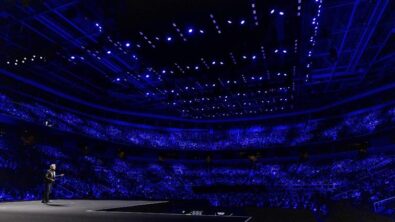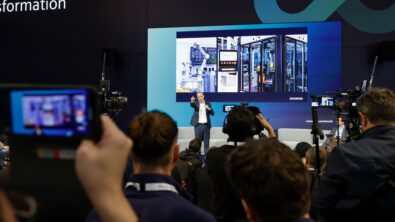PLM Connection: Astronaut Hans Schlegel Keynote

Astronaut Hans Schlegel provided a keynote presentation at PLM Connection. It’s hard not to be amazed at someone’s experience when it includes working weightless and viewing up to 16 sunsets in one day. Perhaps more impressive to an audience of engineers is learning more about the complexities of spacecraft design and risk per payload factors.
Hans shared some of his experience from two space missions – 15 years apart. In 1993, he was as a payload specialist STS-55 aboard Space Shuttle Columbia, conducting 90 physics and life sciences experiments. In 2008 he was on the STS-122 mission aboard Atlantis.
He is German but has worked on both American and European space programs. You can read more about Hans in his complete bio. He noted how important teamwork is to their success.
He summarizes some key takeaways in this video.
Hans shared a mission video and gave a play-by-play from what happens in space from launch to touch down. It was interesting to see what transpires before and during a launch. First he noted the size and complexity of the shuttle – 10 meters boosters, 50 meters shuttle and a payload that is 25 meters long. Astronauts lie on their backs for 2.5 hours. Then just 7 seconds before lift off when engines are lit. Just 2.5 minutes after takeoff the rocket boosters cut loose. Then 8 minutes later they’re in space.
He spoke quite a bit about weightlessness and the challenges it presents until you’re used to it. He said you may go to flip a small switch, and instead it flips you.
Here is the second part of my interview with Hans where he addresses the most interesting parts of his missions and a little about what it’s like to be an astronaut.
Finally, I liked what Hans shared about the view from space. He noted the peacefulness of viewing home (Germany) from space. He noted when he was in space in 2008, there was German ship held hostage off the coast of Somalia. Yet you don’t see any of that.
“Once you’re in space, you look back to our planet…but you don’t see religion, race, language, just one planet Earth.”


